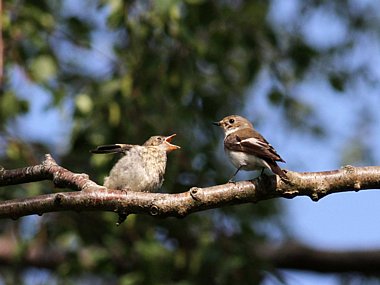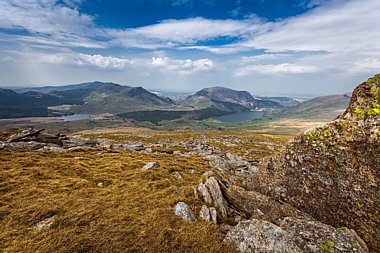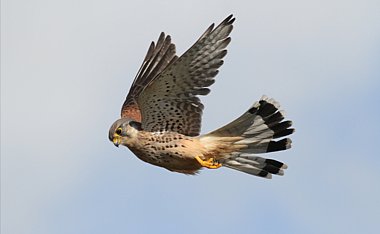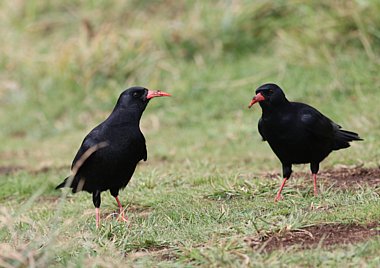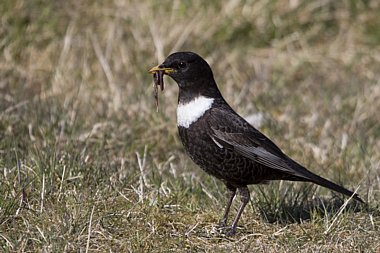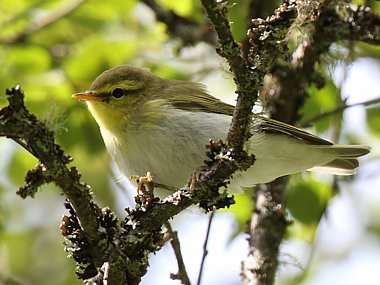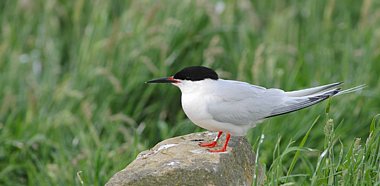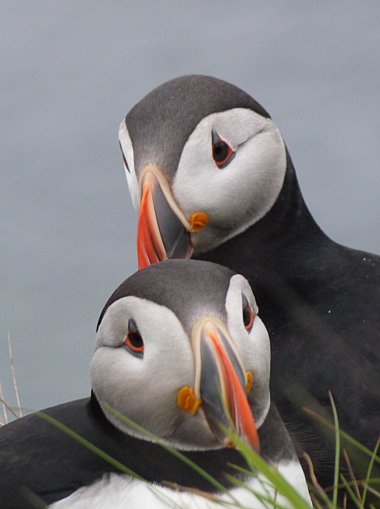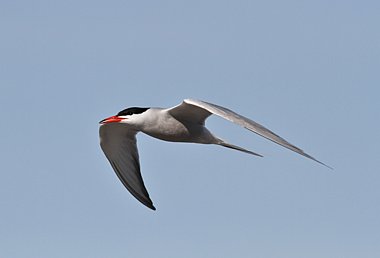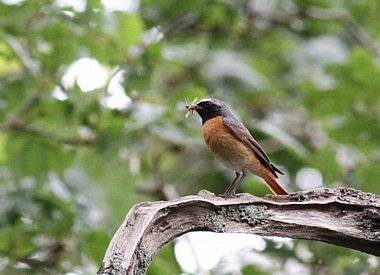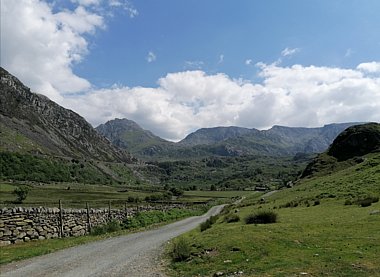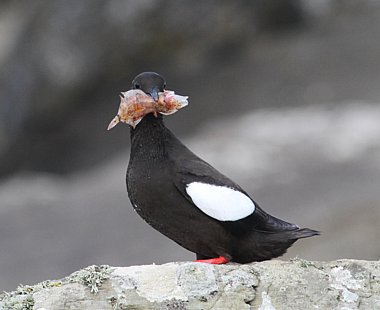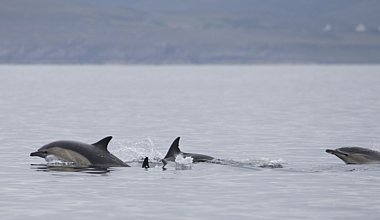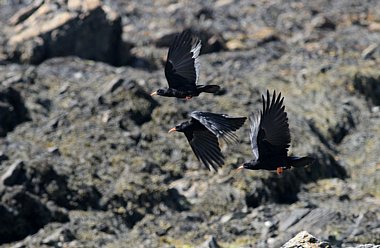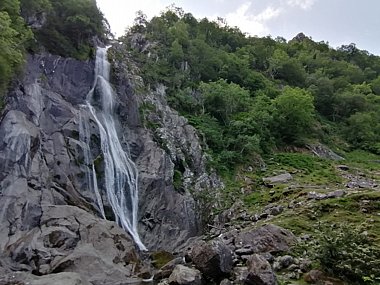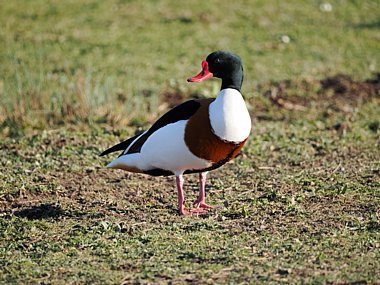North Wales in Summer
Anglesey, Bardsey, and Snowdonia National Park.
| Destination | |
|---|---|
| Focus | |
| 2026 Dates | |
| Duration | 8 Days |
| 2026 Price | £2295 pp £260 single supplement. Deposit £300 |
| Max Group Size | 7 per guide |
North Wales (Gogledd Cymru) is a wildlife rich region, which we explore by both land and sea on this exciting holiday, dividing our time between coastal locations and the famous Snowdonia National Park. Habitats are varied, and we visit estuarine hotspots, coastal bays, beaches, freshwater lakes and the spectacular bird-rich islands of Anglesey and Bardsey. Inland lakes, fast flowing rivers, forest and mixed woodland, open moors and the Snowdon Mountain itself offer different wildlife opportunities on this enjoyable trip.
Anglesey is a large island offering great excitement for visiting birdwatchers. A morning at South Stack RSPB will get us off to a good start with Puffin, Black Guillemot and other seabirds to the fore. On the clifftop and in nearby scrub, songsters including Skylark, Rock and Meadow Pipit, Stonechat, Wheatear and Linnet are likely, as are Chough, Raven and Peregrine overhead. Later, we visit Cemlyn Bay and Lagoons, an internationally important site for breeding Sandwich, Common and Arctic Tern, plus rare but regular Roseate Tern.
Bardsey is a fascinating, bird rich island about a mile in length and half a mile wide, and noted for its 20,000 pairs of Manx Shearwater. We plan to land on this beautiful island which is largely low lying and easy to explore by foot. We enjoy the Puffins, listen out for Chough and search the scrub and bushes for passerines and any late migrants. We work closely with the Observatory team to make the most of our visit. A great day out to a very special island!
Conwy’s Great Orme has a growing reputation for good birdwatching with a number of migrant and scarce birds recorded in recent years. We enjoy a walk around the headland where Chough may be seen before checking the waders on the nearby estuary, and pools for scarcer species such as Curlew Sandpiper and Little Stint.
We also visit Snowdon, the highest mountain in Wales, and subject to weather we take the train to the summit for stunning views far and wide across the entire Snowdonia National Park. Walking back down on good tracks (a weather dependant option) we look out for Wheatear, Raven and Peregrine. The mountain is also home to rare Alpine plants, including the aptly named Snowdon Lily. Twite may be found on less grazed farmland, while attractive wooded valleys hold Wood Warbler, Redstart, Spotted and Pied Flycatcher, Tree Pipit, Dipper and more. Nearby Welsh Moors hold substantial numbers of Black Grouse and we hope to see displaying birds. Breeding Red Grouse, Ring Ouzel, Wheatear, Whinchat and raptors including Hen Harrier, Osprey and Merlin are also likely on this great new tour.
The holiday begins and ends at Bangor, where rail transfers will be available. For the complete Wales experience, this tour can be combined with our South Wales in Summer holiday!
Day 1: Arrival and local birding
We meet rail travellers at Bangor Station before driving to our comfortable hotel, where we meet those arriving by car. Once organised we head out for some local birding, perhaps exploring coastal sites along the Menai Straight if tides are favourable, or heading inland to the north-west perimeter of the Snowdonia National Park.
Day 2: Anglesey
Anglesey is a large island offering great excitement for visiting birdwatchers. A morning at South Stack RSPB will get us off to a good start with Puffin, Black Guillemot and other seabirds at the fore. On the clifftop and in nearby scrub, songsters including Skylark, Rock and Meadow Pipit, Stonechat, Wheatear and Linnet are likely, as are Chough, Raven and Peregrine overhead. Scanning offshore for cetaceans and seals, we should also see passing Gannet and Fulmar. Later, we visit Cemlyn Bay and Lagoons, an internationally important site for breeding terns. We will probably hear the birds before we see them, the cacophony from so many nesting pairs being audible at long range. Sandwich, Common and Arctic Tern all nest in high numbers, and we scan through the masses for rare but regular Roseate Tern. Exciting vagrants can sometimes be attracted to the colony, with Elegant, Sooty and Bridled Tern all having been recorded in the summer months at Cemlyn over the years. Anglesey also boasts a number of great coastal sites, and we plan to finish the day at one of the these. Passage waders including Black and Bar-tailed Godwit, Whimbrel and Green Sandpiper are possibilities, while a pleasant walk through reedbed habitat may yield a Marsh Harrier or Bittern - both rare, but recent additions to the islands breeding bird list. These well managed sites are always busy with birds, and we may hear (or indeed see) Sedge, Reed and Grasshopper Warbler or perhaps a calling Water Rail before we return over the Menai Bridge to our base.
Day 3: Bardsey Island
Less than two miles off the Llŷn Peninsula lies Bardsey, a fascinating, bird rich island about a mile in length and half a mile wide. A real birding gem, the island supports many breeding seabirds and is noted for its 20,000 pairs of Manx Shearwater. Pelagic by day, these birds only return to the island at night and we are most likely to see them, along with other seabirds, seals and perhaps cetaceans during our boat trip. We plan to land on this beautiful island which, with the exception of Myndd Enlli rising to 167m above sea level is largely low lying and easy to explore on foot. With several hours ashore, we can enjoy the Puffin colony at leisure, listen out for Chough on coastal strolls and search the scrub and bushes for passerines and any late migrants. Since its establishment in 1953, Bardsey Bird Observatory has famously recorded the wildlife here, with over 300 bird species logged including rarities. Little Owl are a scarce (yet tricky to find) resident, large numbers of Grey Seal breed and we intend to work closely with the Observatory team to make the most of our visit. A great day out to a very special island!
Day 4: Conwy and the north coast
Conwy’s Great Orme has a growing reputation for good birdwatching with a number of migrant and scarce birds recorded in recent years. We enjoy a walk around the headland where Chough may be seen, keeping a watch for Harbour Porpoise offshore. Later we plan to move in to Conwy RSPB or one of a great selection of local reserves along the Menai Straight. With over 20 miles of superb, tidal coastline it is well worth checking through building flocks of Oystercatcher, Curlew, Redshank and Dunlin for scarcer species such as Greenshank, Spotted Redshank, Curlew Sandpiper or Little Stint. Gull flocks in the area may contain increasing numbers of Mediterranean or Yellow-legged Gull, and we lookout for Eider and Common Scoter offshore. Little Egret (which now breed) will certainly be present, Kingfisher are possible and if time allows we will visit a large Little Tern colony or search for any rarities within reach.
One evening if the weather is favourable, we will offer an optional excursion for Nightjar at a location close to our hotel. Arriving at dusk, we listen out for their distinctive 'churring' calls, and if lucky may enjoy a sighting of these cryptic birds too. Barn and Tawny Owl are also possible, as are 'roding' Woodcock and other local, nocturnal wildlife might include the bizarre Glow-worm and several species of bat.
Day 5: Snowdonia National Park
Today we visit Snowdon, the highest mountain in Wales standing at 1085m above sea level. We have options on this day, and targeting the best possible weather we could choose to take the train to the summit for stunning views far and wide across the entire Snowdonia National Park. Walking back down on good tracks (which can be busy on a fine day) is a weather dependant option, looking out for Ring Ouzel, Wheatear, Raven and Peregrine as we go. The mountain is also home to rare Alpine plants, including the aptly named Snowdon Lily at its only UK site, though it is notoriously difficult to find on largely inaccessible terrain. Once descended or if we chose to spend less time on the mountain, we explore the attractive wooded valleys with fast flowing streams. The summer home to a range of species, we target specialist breeders including Pied and Spotted Flycatcher, Tree Pipit, Redstart and Wood Warbler. Blackcap are especially abundant in these habitats, with Grey Wagtail, Garden Warbler, Goosander, Common Sandpiper and plenty of other species likely too.
Day 6: The Welsh Moors
A full day on the picturesque Welsh Moors in the eastern reaches of the National Park. An early start is likely, positioning ourselves at a substantial Black Grouse lek and we hope to see displaying birds. Breeding Red Grouse, Ring Ouzel, Cuckoo, Wheatear, Whinchat, Skylark, Meadow Pipit and Stonechat are also present. Lakes and flowing streams in the area support Dipper, Grey Wagtail, Common Sandpiper and Goosander, with a few Little Ringed Plover and at least one pair of Osprey present too. Other raptors hunting the open ground might include Hen Harrier, Short-eared Owl, Merlin, Kestrel or Hobby, with Buzzard, Red Kite, Goshawk (scarce) and Kestrel more likely closer to forestry.
Day 7: Round up day
We have plenty of options for our final day, with the species we might not have yet seen helping to decide our plans. A small, dwindling population of Twite may be found in less grazed farmland between the Snowdonia hills, and if we haven't yet looked for them already we might choose to do so today. Nearby habitats offer additional chances for Ring Ouzel, Spotted Flycatcher and Lesser Redpoll or we may focus on local botanical interests if the target birds have been seen. Wood Warbler can be a tricky species to connect with once they cease singing, so another walk in the ancient woodlands to search for them, plus Pied Flycatcher and Redstart is another possibility. Slightly further afield is Ynys-Hir, at the southern border of the Snowdonia National Park, a good location for the same three deciduous woodland specialists, while the nearby Dyfi Estuary Osprey Project can also be productive and is a good wet weather option. Either way, there will be plenty to keep us entertained as our tour nears its end.
Day 8: Final birding and departure
Some local birding in the Snowdon area or at coastal reserves before our holiday concludes, with rail passengers being returned to Bangor station.
Please note: all itineraries are given as a guide only. Actual holiday content may vary according to the judgement of your guide, and elements beyond our control (eg weather).
What's included in your holiday price
- Seven nights comfortable en-suite hotel accommodation. We choose from our personally inspected shortlist, where birders are welcome and the hospitality is special. Guests are never expected to share. All rooms are en-suite. Full details with your joining pack.
- Full English breakfast and dinner from Sunday evening till Sunday morning, packed lunch each day from Monday to Saturday.
- Boat trip to Bardsey Island.
- All entrance fees for reserves and for the Snowdon Mountain railway.
- All transport by comfortable minibus.
- Guidance from a professional Group Leader.
What's not included in your holiday price
- Travel to Bangor rail station or other agreed meeting point.
- Insurance, drinks and other items of a personal nature
Field Notes
Expect a wide variation in weather conditions, which can be wild and unpredictable, with temperatures in Wales perhaps averaging around 16 degrees Celsius. Sunshine, rain and strong winds are all possible, and you will probably experience a bit of everything. Biting insects are not expected. Please bring waterproof walking boots or shoes, weatherproof clothing and a small rucksack. Boat trips and exposed coastal locations can be cold at any time of year if the wind picks up, please pack accordingly. The holiday will be run at a relaxed pace, with time for photography, general wildlife and botany as well as fabulous birdwatching in a spectacular setting! There will be short to moderate (1 to 3 mile) walks most days mainly on well walked tracks and paths. Walking around the Snowdonia, and particularly around Snowdon mountain can be more strenuous, but this too will be on well marked paths. A reasonable level of health would be an advantage on this tour to be able to get off the beaten track at times.
Other birding and wildlife holidays in Wales
Why choose Heatherlea for your birding and wildlife holiday?
Heatherlea is one of Britain's leading wildlife holiday operators. In 2019 we celebrate our 29th Anniversary with more choice than ever, both in Scotland and overseas. Relax and enjoy yourself, as we do all the planning! Above all, we make it our business to show key wildlife to you. Our fully inclusive guided holidays concentrate on the real experience, and we take time to ensure that each of our guests enjoys everything we do.
- We have been organising birding and wildlife holidays for 30 seasons, and have a highly experienced and capable office team. We also offer a telephone and email service outside normal office hours.
- We are a small company, run BY birders FOR birders. Come and see!
- Heatherlea are Mainland Scotland’s FIRST ‘5-Star Wildlife Experience!’ This is the highest available grading, classified as ‘exceptional’ by visitScotland.
- Heatherlea hold full Tour Operator Insurance for your added protection.
- Heatherlea is a limited company, registered in Scotland. We are also registered to pay VAT, which is included in your holiday price as quoted on this page.
- Once your holiday is confirmed in writing by us, we promise not to surcharge the price for any reason.

